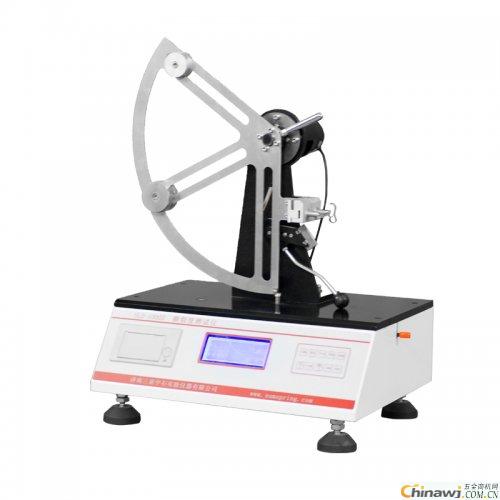Paper Avery Mendorf tear test method
The tear strength is an important indicator of the physical properties of the paper. The tear strength of the paper is closely related to the fiber properties. To a large extent, the fiber properties determine the tear strength of the paper. Therefore, it is possible to judge the fiber characteristics of the paper by detecting the tear strength of the paper. The tear strength of the paper is reflected by the two factors of tear and tear index. The degree of tear is the average of the force required to tear a piece of paper (or cardboard) that has been previously cut to a certain length. If the initial incision is longitudinal, the result is a longitudinal tear. If the starting cut is transverse, the result measured is the transverse tear. The results are expressed in millinewtons (mN). The tear index is the degree of tear of the paper (or cardboard) divided by its basis weight. The results are expressed in millinewtons per square meter per gram (mN.m2/g).
Today we mainly explain the test methods and related equipment for paper tear in the standard "GB/T455-2001 Determination of tearing of paper and paperboard". Test principle: A stack of specimens (usually 4 layers) with a defined pre-cut, with a tearing force applied to the plane of the plane perpendicular to the plane of the specimen, tearing the paper a fixed distance. The potential energy loss of the pendulum is used to measure the work done during the tearing of the sample. The average tear force is indicated by the scale on the pendulum or by the number, and the paper tear is determined by the average tear force and the number of layers of the sample.
Instrumentation: The Elliman Dove Tear Tester, as shown in Figure Al, consisting of a pedestal and a pendulum. The pendulum is supported on a bearing with low friction, allowing it to swing freely around the horizontal axis. The specimen is clamped between two clamps, one of which is fixed to the base frame and the other to the pendulum. The specimen surface should be at least 25 mm wide and 15 mm deep.
Sample preparation and preparation
The sample is taken according to GB/T450 to ensure that the sample taken has no creases, wrinkles or other obvious defects. If there is a watermark, it should be indicated in the side test report.
The size of the sample shall be (63 士..5) mmx (50 ± 2) mm, and the sample shall be cut separately in the longitudinal and lateral directions of the sample. If the longitudinal direction of the paper is parallel to the short side of the sample, a lateral test is performed, and vice versa. At least 5 effective tests should be performed in each direction.
experiment procedure
1. Select a suitable pendulum or weight according to the sample, and make the measurement reading within 20%---80% of the full scale value. Raise the pendulum to its original position and secure it with the release mechanism of the pendulum, with the sample half facing the knife and the other half facing the knife. The side edges of the specimen should be neat, and the bottom edge should be completely in contact with the bottom of the clip and clamped positively. Use a cutter to cut the sample into a neat blade and return the knife to the rest position. With the pointer in contact with the pointer stop, the release device of the pendulum is quickly pressed, and when swinging back, the hand is gently grasped by hand without obstructing the position of the hand. Level the pointer with the operator's eyes and read the pointer reading or digital display value. Release the clip to remove the torn sample and return the pendulum and hand to the initial position for the next measurement.
2. When there are 1-2 samples in the test, the end of the tear line and the left and right skew of the knife edge extension line exceed 10m, and should be discarded. The test was repeated until 5 satisfactory results were obtained. If more than two specimens are skewed more than 10 mm, the results can be retained, but skew should be noted in the report. If the specimen is peeled off during the tearing process, rather than being torn in the normal orientation, it should be treated as described above for tearing.
8.3 The number of layers to be measured shall be 4 layers. If satisfactory results are not obtained, the number of layers may be increased or decreased as appropriate, but it shall be stated in the report.
Result calculation
Tear degree formula: F = (S . P ) / n
Where: F- tear, mN;
S—the average scale reading in the test direction, mN;
P—the conversion factor, which is the number of design layers of the scale, generally 16;
N-—The number of layers of the sample that are torn at the same time.
Tear Index Formula: X = F/G
Where: X- tear index, mN .m2/g;
F tear, mN; G-quantitative, g/m2
The above method is the relevant test method for paper tear specified in the standard. The equipment used is also a mechanical tear tester, and the experimental results need to be manually calculated. The electronic tear tester SLD-1000Z produced by Jinan Sanquan Zhongshi Experimental Instrument Co., Ltd. adopts liquid crystal Chinese display and has test data memory function, which can realize integrated functions of automatic test, calculation and print result. Easy to use unit operation, the electric release pendulum function reduces the test error that varies from person to person, and is the necessary testing equipment for related paper products units, quality inspection organizations and related institutions.
Chen Meiru 0531-6781 3036 15666775359
Http://news.chinawj.com.cn
 Submission:
Submission: 
Komatsu Cab Parts,Komatsu Cab Door Parts,Komatsu Cab Genuine Part,Komatsu Excavator Cab Parts
JINING SHANTE SONGZHENG CONSTRUCTION MACHINERY CO.LTD , https://www.stszcmparts.com